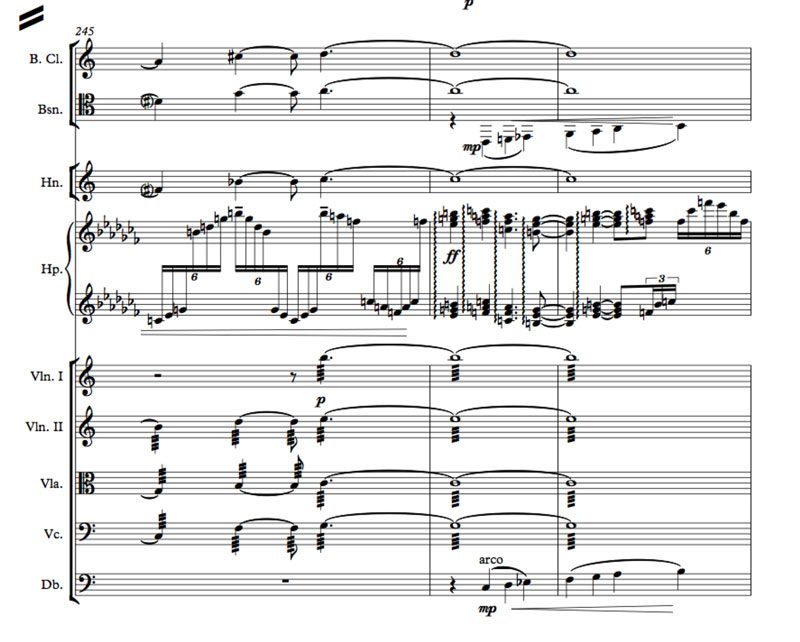Double basses can carry the bass part alone, but the tone of their part will be different from cellos alone, or doubling with cellos. One of the great boons of orchestration since Beethoven is the liberation of the double basses from doubling the cellos exclusively. Basses can easily hold down the bottom end while the cellos play a featured line, rhythmic patterns, accompaniment figures, or harmonic support. The orchestrator must be aware, however, that the timbre of basses as the sole bass voice is quite different from that of the usual symphonic positioning of basses playing octave unison with cellos.
The reason for this, which I will return to throughout this week, is that the double bass is not a member of the violin family. The mathematical proportions of the violin/viola/cello shapes would not work at that size – the wrong overtones of the strings’ resonance would be emphasized (or rather, different overtones would be emphasized – look into experiments in building a true “bass violin”)
Therefore, the bass has a different sound, as it is a member of the viol family. It’s darker, more brooding, and yet capable of surprising transparency and fluidity as a solo or section soli. That is the family characteristic of the viols – why music written for them celebrates that essence, and why instrument makers broke away from that sound to create the stronger, more voluptuously-toned violin family.
In the following excerpt from my harp concerto, the double basses play a passage soli under tremolo strings and three-part harmony of horn, bassoon, and bass clarinet, all supporting the solo harp coming out of its cadenza. The basses are doubled by the second bassoon, just to help solidify the tone slightly. The rising line provides contrapuntal interest to the passage, and increases the sense of growing expectation. The understated tone of the basses helps to not overwhelm the delicacy of harp line.









